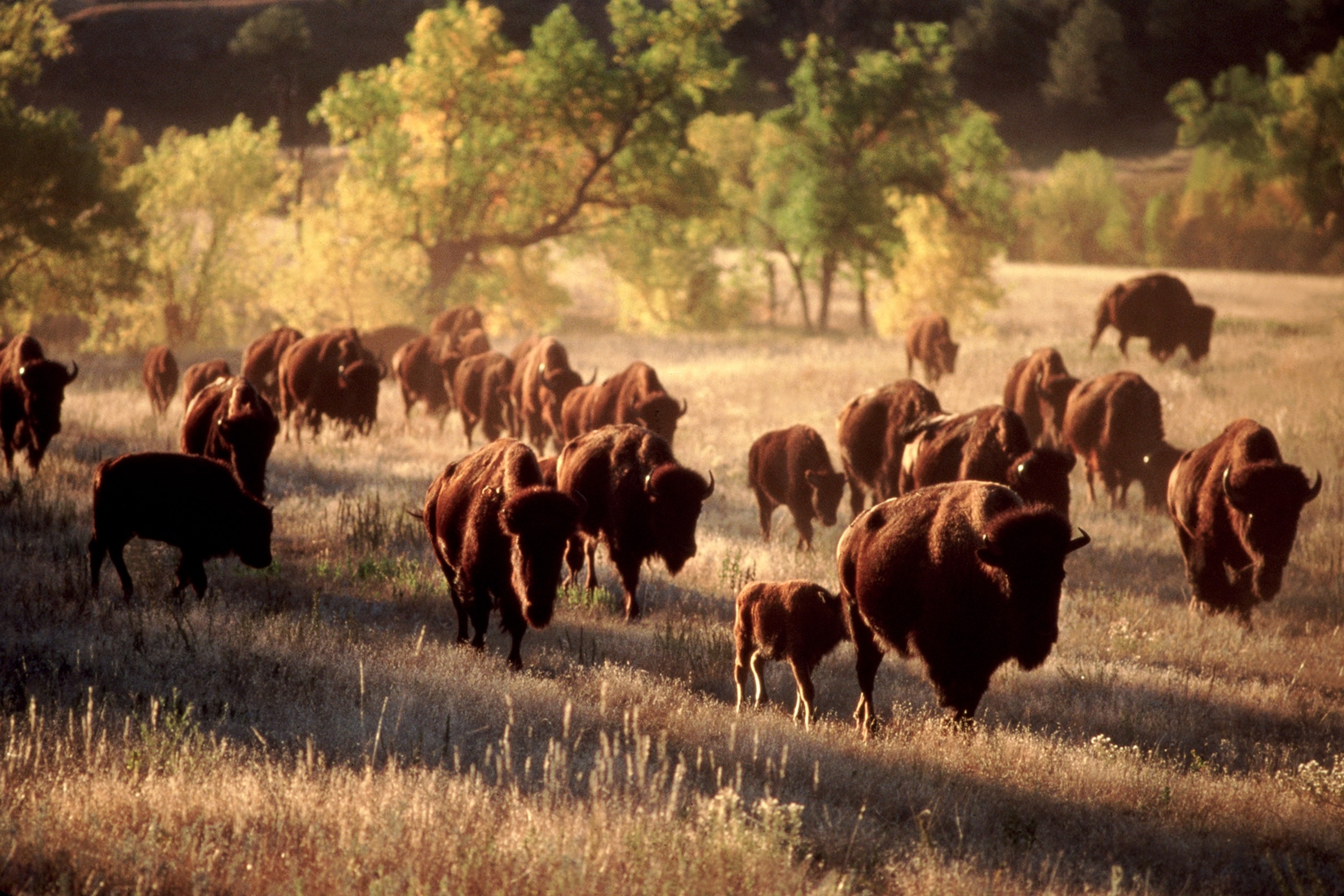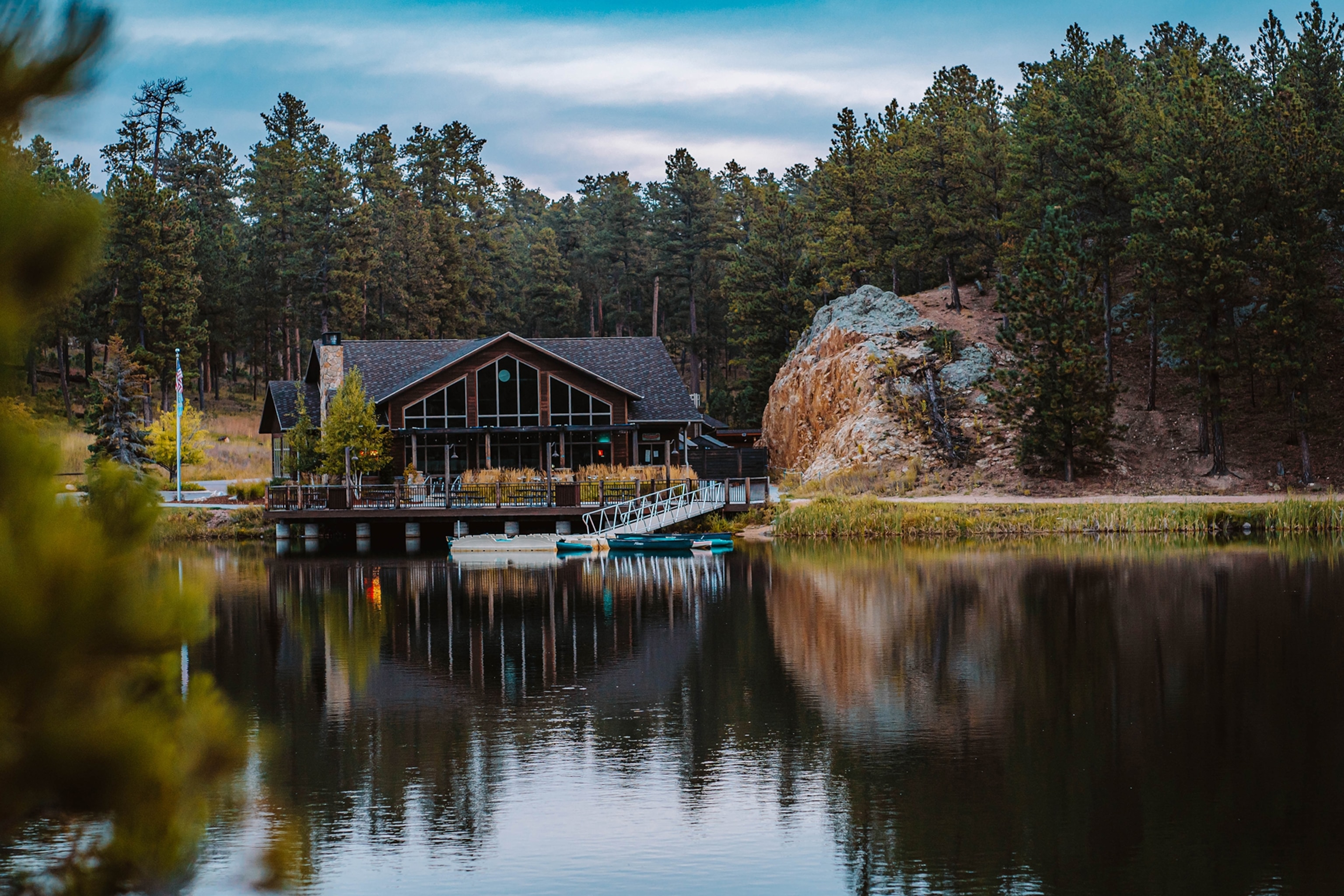
Black Hills and dazzling lakes—the ultimate guide to South Dakota's largest state park
Famous for its free-roaming bison, Custer State Park draws travellers with its historic hikes, picturesque byways and first-rate fishing.
The wild heart of South Dakota, Custer State Park rivals many of America’s national parks in scope and splendour. Just a 30-minute drive from the iconic faces of Mount Rushmore, you’ll discover some of the most distinct landscapes in the American West. Set deep in the Black Hills, the park is renowned for its granite peaks, sparkling lakes and one of the largest publicly owned bison herds in the world, with over 1,400 of these magnificent creatures roaming freely across the valleys. Though it offers all visitors twisting highways and world-class hiking trails, it especially rewards those who choose to stay longer and travel deeper. Here’s how to do just that.
Day 1: Take a scenic drive
Start your adventure from behind the wheel. Set off early on the southern end of the Needles Highway, a 14-mile marvel that snakes along pine forests and through narrow tunnels. Stop at the Needles Eye, a natural granite spire with a window-like opening, and take your time to explore the short walking trails with their stellar viewpoints. Continue on Iron Mountain Road, where you’ll encounter 314 bends, 14 switchbacks, three wooden pigtail bridges and views of four presidents at Mount Rushmore. The road’s curving design climbs more than 980ft, providing constantly changing perspectives of the surrounding peaks. Finish on the Wildlife Loop Road, an 18-mile drive best timed for late afternoon, when wildlife is most active — you’ll likely encounter the park’s famous bison herd, along with pronghorn antelope, white-tailed deer and prairie dogs. For dinner, head to Blue Bell Lodge, located just off the Wildlife Loop Road, and enjoy hearty Western food on the patio, which overlooks the babbling French Creek.

Day 2: Get active in the Black Hills
The next day, trade four wheels for two feet. Start with the Badger Clark Trail, a moderate, one-mile hiking loop named after South Dakota’s first poet laureate, Badger Clark, who served from 1937-1957. Clark’s cabin, Badger Hole, is now open to the public; pop in to see how one of the park’s most famous characters lived. Hikers and bikers can zoom along the Barnes Canyon Trail. A historic mining road through a canyon, the nearly five-mile trail showcases the park’s industrial heritage and offers excellent opportunities to spot elk and bighorn sheep. Alternatively, take on the Cathedral Spires Trail, a short-but-sweet 1.5-mile hike that ends among granite pinnacles rising above the forest floor. Later, head to the historic Sylvan Lake Lodge, set dramatically beside one of the Black Hills’ most photographed lakes. Enjoy a cosy meal in the dining room, with its roaring fires and double-peaked wood ceiling — or make a reservation to dine on the lodge’s stone verandah for even more impressive Black Hills views.
Day 3: Paddle over serene waters
Just beyond the lodge lies Sylvan Lake, perched nearly 6,145ft above sea level. Framed by granite outcrops, it’s perfect for a morning of standup paddleboarding or kayaking. Or visit Stockade Lake, the park’s largest body of water and a haven for rainbow and brown trout. For some of the best fishing in the Black Hills, rent a kayak from one of the park’s lodges or try your luck casting from the shore. For tranquil waters, head to Legion Lake, where you’re likely to spot deer, wild turkeys and a variety of waterfowl. Stay in a cabin at Legion Lake Lodge, which offers everything from kayak rentals to beach and trail access.

Day 4: Discover local culture
Explore Custer State Park’s rich history on your final day. Begin at the Gordon Stockade, a replica of the 1874 fort built by the Gordon Party, one of the first groups of gold prospectors to enter the Black Hills. Climb the Mount Coolidge Fire Tower for panoramic views of the entire region — on clear days, you can see Mount Rushmore from the tower’s observation deck. Cap off your visit with a performance at the Black Hills Playhouse, a professional summer theatre located within the park. The venue, surrounded by ponderosa pines, has been entertaining visitors since 1946 with classic plays, musicals and contemporary works. Alternatively, head to the State Game Lodge for dinner. Try local favourites, such as buffalo skirt steak and walleye almondine, and enjoy a sunset cocktail on the patio. As darkness falls over the Black Hills, you’ll understand how they got their name — despite all the brilliance they hide.

Plan your trip
To subscribe to National Geographic Traveller (UK) magazine click here. (Available in select countries only).




